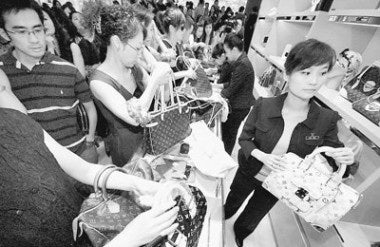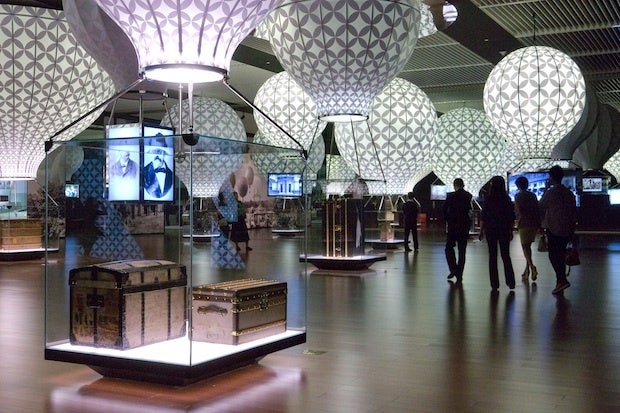
Every brand wants a pristine image and strong sales. (Who wouldn't?) But amidst the complexities of a developing China, can they have both? If not, which one should they prioritize? Watching the frenetic shopping scrum from my perch in Hong Kong, I say "brand image" trumps "sales" every time.
Launching a brand in China is an expensive proposition, and there is a voracious buyer base -- the image of shark-chumming comes to mind. For any brand, the temptation to throw their own chum into the mix is often tempting. The sooner their investment pays off, in the form of sales, the better, right? Since the 1990s, major luxury brands have poured millions, perhaps billions, into China in an attempt to access the ever-demanding Sino-consumer. This is a culture where buyers wait in three-hour lines at the local Gucci store and young women save their annual salary for one Prada bag. With this kind of buying behavior, it's normal for brands to focus on sales and getting as many products in as many hands as possible.
But are there risks to that strategy? Louis Vuitton, undoubtedly the godfather of luxury brands in Asia, recently reported that Q1 2012 Asia-Pacific sales growth slowed to 10 percent, versus 18 percent in the previous quarter. Burberry reported a 10 percent decrease in Q1 2012 over Q4 2011. This may simply be a quarterly blip, or it could reflect something more endemic.
A quote by social media expert Thomas Crampton at a recent Ogilvy presentation may shed some light on the trend. When asked about her thoughts on Louis Vuitton, one mainland Chinese shopper replied, "My maid has a Louis Vuitton [handbag]. Why do I want to look like my maid?" (For the record, my own Louis Vuitton bags haven't seen daylight in years, because they simply don't feel "special" anymore.)
In China, has brand image been sacrificed for sales? When everyone is wearing the same thing, is it still luxurious?

This development is great news for new brands just entering the market. As China's early adopters start to experience brand fatigue, they're becoming highly receptive to newcomers. That's not to say that the lines outside of Louis Vuitton stores in Hong Kong will evaporate -- heavens no! -- but I do believe that as consumers become more confident, they'll spread their wings and try new brands. The trick is for these new brands to focus on finding their core consumers, even if that initially means slower sales.
To return to the original question posed in my title, I don't know the answer. Every brand will have to decide for themselves. But I do know that 40 years after Pierre Cardin famously lent his name to everything from cigarette lighters to frying pans, he's never regained his prior glory. (Even in China, the Pierre Cardin brand is irrevocably tarnished.) Cardin lost his alluring, desirable chicness by becoming visible...everywhere.
Luxury and ubiquity are not good bedfellows. It takes years to build up a reputation and only seconds to destroy it. (Think of John Galliano.) In the case of a fashion label, this might not happen overnight, but with a prize as big as the China market, do you really want to take the chance?
Sonya Madden has lived in Hong Kong since 1994, first as a Banker then as a Fashion Designer/ Entrepreneur. She’s featured in the best-selling book “Ladies who Launch in Hong Kong – How 12 Women Started Million Dollar Businesses.” She consults to Western and Chinese fashion companies in China. Follow her on Twitter at @SonyaMadden1.
(Opinions expressed by columnists do not necessarily reflect the views of the Jing Daily editorial team.)
